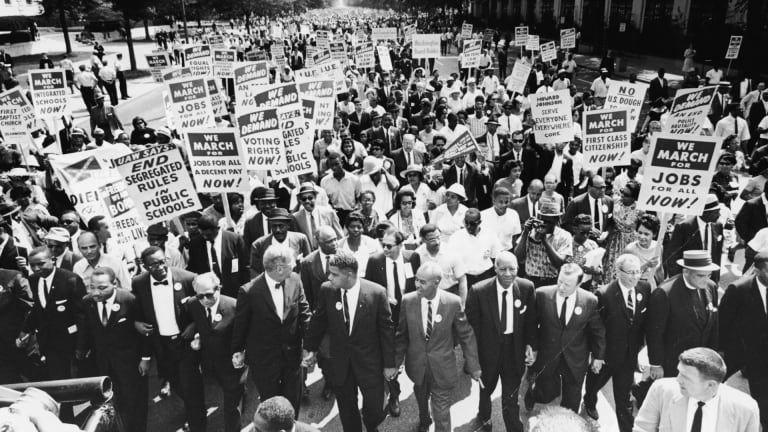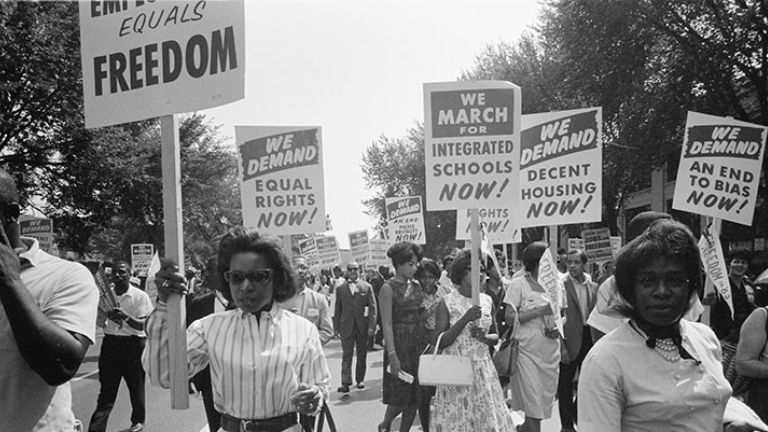From 1955 to 1965, there was a war in the middle of America. No, it wasn’t a war like World War II or the Revolutionary War. It was a war for the heart and soul of this country, to determine once and for all whether America was truly going to be a land of equal opportunity for all. It was a war that came to be known as the « Civil Rights Movement ».

Make no mistake, this was no mere exchange of hissy fits. Some of the events we still remember today became quite brutal and deadly. Those who fought in this war on both sides were very serious about the causes they represented and prepared to fight and even die to see their cause succeed. The war lasted for years and steady progress was made, but not without enormous sacrifice on the part of the movement’s leaders, who were determined to give new meaning to the phrase « free my people ».
In all of black history, there may not have been a more important period since the Civil War when African-American rights were so thoroughly fought for and won. Tensions in the country had risen. When the Supreme Court imposed desegregation in the schools in the landmark Brown v. Board of Education case, the stage was set. But it was on December 1, 1955, when Rosa Parks refused to give up her seat to a white man on a bus in Montgomery, Alabama, that the movement finally took shape and became a titanic struggle for the rights of African-Americans in America. This first battle brought to the front line one of the most important figures in the civil rights struggle of that era, the Reverend Martin Luther King.
This formidable struggle for freedom was never easy, and was often marked by violence. Over the next ten years, some of the most important events in Black history took place, including…

* 1957 – President Eisenhower had to send federal troops to Arkansas to gain admission for nine black students to Central High School.
* 1960 – The sit-in at Woolworths counter in Greensboro, North Carolina, paved the way for nonviolent protest, which was used with great success for the rest of the struggle. Non-violent protest and civil disobedience became an essential part of the civil rights movement thanks to the influence of Martin Luther King.
* 1963 – The historic March on Washington, in which over 200,000 people gathered to hear Martin Luther King‘s famous « I Have a Dream » speech.
* 1964 – President Lyndon Johnson signs the bill that is the most important event of his presidency and in which he believes deeply, the Civil Rights Act of 1964.
* 1965 – Malcolm X’s subpoena and Watts’ racial rights.
* 1965 – President Johnson takes another bold step to accelerate the civil rights movement by implementing affirmative action when he issues Executive Order 11246.
See also our article: The Underground Railroad
This short list is just a glimpse of the highlights of this troubled era, when the rights of all American citizens, black and white and of all colors, were being redefined in the streets, in the courts and in the various branches of government. In the years to come, great strides forward will be made. One by one, all areas of American life will see breakthroughs by African-Americans in sports, entertainment, education and politics. There have been many proud moments, but also moments of great shame and heinous acts committed by whites and blacks alike. But through all this struggle, society has continued to develop and adapt to the will of the people, as has always been the tradition in American culture.
The struggle is far from over. Discrimination and hate speech remain a problem to this day. And while it’s easy to look back on those days of struggle with regret, we can also look back on them with pride. We can be proud of the great leaders who showed extraordinary courage and wisdom to lead this nation to a better way of life. And we can be proud of America, for it is here that such a struggle can result in equality and freedom for all citizens, not just a few.










